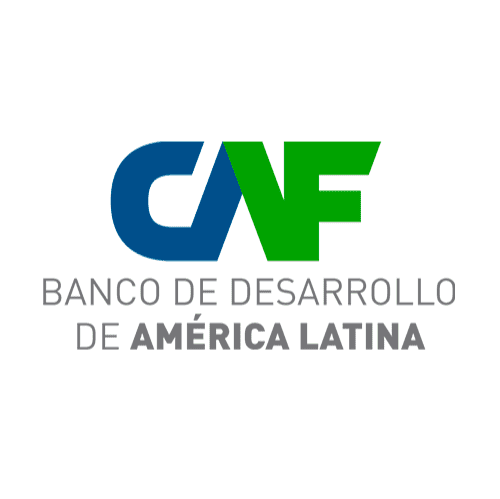Establishment February 7, 1968 Founded 7 February 1968 | Headquarters Caracas, Venezuela | |
 | ||
Largest Shareholder countries Multilateral development bank Membership 17 members
associate members CEO L. Enrique Garcia (Dec 1991–31 Mar 2017) Subsidiaries Corporación Andina de Fomento, Asset Management Arm Profiles | ||
Caf development bank of latin america
The Corporacion Andina de Fomento (CAF) – Banco de Desarrollo de América Latina (Portuguese: Corporação Andina de Fomento (CAF) – Banco de Desenvolvimento da América Latina, English: Andean Development Corporation – Development Bank of Latin America), has the mission of stimulating sustainable development and regional integration by financing projects in the public and private sectors, and providing technical cooperation and other specialized services. Founded in 1970 and currently with 18 member countries from Latin America, the Caribbean, and Europe along with 14 private banks, CAF is one of the main sources of multilateral financing and an important generator of knowledge for the region.
Contents
CAF is headquartered in Caracas, Venezuela. Additionally, it has Representative Offices in Lima, Brasilia, Bogota, Buenos Aires, Quito, Panama, Montevideo, and La Paz.
History
The CAF was founded in 1966 following the historic signing of the Declaration of Bogotá in the presence of its framers, President Carlos Lleras Restrepo of Colombia, President Eduardo Frei Montalva of Chile, President Raúl Leoni of Venezuela, and the personal representatives of the presidents of Ecuador and Peru. The government of Bolivia would join later in 1967. In 1967, a Joint Commission, set up to address regional issues, mapped out the basic principles of CAF, and on February 7, 1968 the member countries governments signed its Establishing Agreement in San Carlos Palace, Bogotá. The Corporation was conceived as a multipurpose bank and agency for promoting Andean development and integration. Two years later on June 8, 1970, after opening its headquarters in Caracas, Venezuela, CAF formally began operations.
The Cartagena Agreement was signed in May 1969 one year after CAF Establishing Agreement which created the political framework for the Andean subregional group. CAF began operations with a subscribed capital of $25 million.
In 1971, Bolivia and Ecuador became the first countries to receive loans for the execution of projects: a rice storage network ($1.3 million) and a fisheries complex for catching and freezing tropical tuna ($0.5 million).
In April 2012, the Financial Times reported that for infrastructure projects, CAF now provides more funding to Latin America than the World Bank and the Inter-American Development Bank combined. This is partly related to the CAF's less restrictive regulations, especially in regards to the environmental impact of projects.
